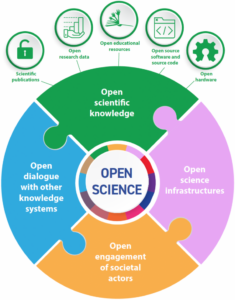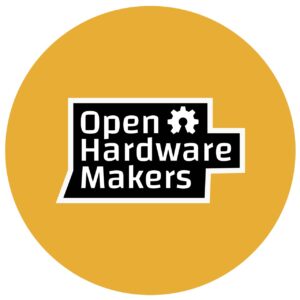To promote more equitable research and discovery, many agree there needs to be greater access to research results, data and software.
But sharing the design of scientific instruments – open hardware – is also critical to being able to replicate experiments and build on open knowledge, according to Julieta Arancio, a postdoctoral researcher working at the Center for Science, Technology and Society, Drexel University in Pennsylvania.
She maintains that the impact of open science cannot be fully realized without attention to a specific dimension of open hardware: the practice of licensing the designs of a physical object in a way that allows the object to be studied, modified, and distributed by anyone.
Many physicists, engineers, neuroscientists, doctors and biologists are using rapid prototyping tools to create their own science infrastructure. Unless the blueprints for those modified instruments are available to all, researchers are limited in advancing open science.
“Within the everyday work of science, there are multiple inequalities regarding physical infrastructure,” Arancio said. “I think open science should be a transformation tool for better and more fair science.”
“Scientific instruments are really complex nowadays. They have multiple, intertwined layers of hardware and software,” Arancio said. “Much of it is proprietary and there’s almost no design information available for the users.”
Supply chain delays exacerbate the problem in the Global South, where access to scientific instruments and spare parts are limited. It’s an unequal, unsustainable system, too, she said, because it doesn’t cost the same to deliver or repair hardware in different parts of the world.
“It affects the way people think about research questions,” Arancio added. “Instead of tools being enablers of your creativity and what local needs are telling you what to explore, you are doing what the available tech lets you do.”
Originally from Argentina, Arancio has a PhD in Science and Technology Studies from the Universidad Nacional de Quilmes in Buenos Aires and has become a leader in the global open science hardware movement. She co-founded the Free/Libre technologies network in Latin America for science and education (reGOSH) that connects activists, educators, researchers and practitioners of open science and technologies. She’s also helped start Open Hardware Makers, a mentorship program for newcomers to the field.
Her current project, funded by the Alfred P. Sloan Foundation, focuses on understanding and producing policy recommendations on how open hardware can transform knowledge production in academia. Arancio recently spoke about her work in February at the 2023 United Nations Open Science Conference in New York.
In advocating for open hardware, Arancio encourages researchers to consider openly licensing their hardware designs even if they are prototypes, as they can help others in similar situations. Universities can support this work through their technology transfer offices, assessing researchers on the adoption of open licenses for hardware as an alternative to IP. Open science hardware is most useful to others when it is accompanied by good documentation on top of design files, source code, and bill of materials. This lowers barriers for collaboration and makes reproducibility possible.
This cultural shift will require a change in the way researchers are trained and supported beginning early in their careers, according to Arancio. Rather than just focus on patenting as a career milestone, she said there needs to be emphasis on the idea that better innovation can come from embracing open practices.
Users should be trained locally to critically assess if a design is good, understand how to modify and to repair the instrument using proper documentation in appropriate languages, Arancio noted.
For open hardware to advance, she added, it’s important to have institutional leadership, support from tech transfer offices, librarians, policies in place for sharing in an efficient way, options available, and career incentives to reward scholars going open.
“The vision is for researchers to be allowed to share their designs openly and discuss, with proper support from university, how to do it,” Arancio said, saving others time in the process. “If you’re building up abilities for open hardware, then you could have a future of science where when someone wants to do something new, they don’t have to start from scratch every time.”

